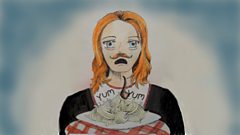The Hamster Power Hypothesis
How many hamsters on wheels would it take to power London? Science sleuths Drs Rutherford and Fry investigate. From 2020.
"How many hamsters on wheels would it take to power London?" asks Judah from Virginia in the USA. Rutherford & Fry return with engineering, ethics and economics to answer this electric query.
Smart grid engineer Lynne McDonald helps keep the lights on for 8.3 million homes and businesses across London at UK Power Networks. She explains how the kilowatt hours we see on our electricity bills relate to the thousands of gigawatt hours required when thinking about powering the whole of London. In theory, a hamster in a wheel might be able to produce about half a watt of power – enough to run a small LED light bulb.
Whilst the doctors argue the case on the resultant practicalities and ethics of even considering such a scenario – as, for example, the required cubic kilometre stack of hamster habitats would cover Canary Wharf – Royal Veterinary College researcher Zoe Davies points out some biological and anatomical home truths. As an expert in biomechanics currently investigating athletic performance in racehorses, she walks Adam through the impossibilities of using pretty much any animal, bird or insect as a source of power.
There may be one exception though: humans. Veteran lecturer of undergraduate chemistry for biologists and cycling enthusiast, Andrea Sella discusses whether human power might realistically work. We consider what this or other more realistic sources of renewable energy could mean for the future of our national grid.
Presenters: Hannah Fry & Adam Rutherford
Producer: Jen Whyntie
A �������� Audio Science Unit production for �������� Radio 4, first broadcast in December 2020.
Last on
Broadcasts
- Tue 8 Dec 2020 15:30�������� Radio 4
- Fri 5 May 2023 21:00�������� Radio 4 Extra
Why do you see faces in unexpected places?
We are “hardwired” for recognising faces and it starts at birth.
Podcast
-
![]()
Curious Cases
Hannah Fry and Dara Ó Briain tackle listeners' conundrums with the power of science!



